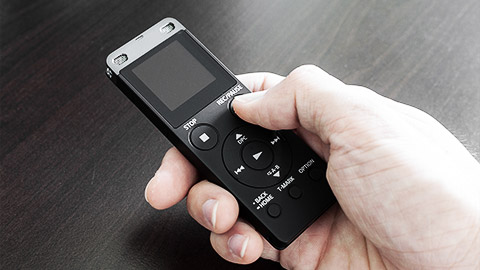Meeting minutes are a business’s record of the meeting event, the decisions made and the actions taken therein. This topic covers how you can ensure that minutes are properly documented.
By the end of this chapter, you will understand:
- the proper process and requirements for logging, distributing and storing meeting minutes
- what information to include in your meeting follow-up documents.
Minute-taking is an essential component of any business meeting.
The Minute-taker
Minute taking is an essential component of any business meeting, providing a complete record of the meeting for participants (and absentees) and—in the case of formal meetings like AGMs and committee meetings— providing an official record that is compiled and suitably stored as required by law.
Key Points
The minutes capture important discussions and decisions that have been made, steps that need to be taken and tracking items for action. The minute-taker must maintain impartiality in their notes and refrain from imposing their own beliefs or opinions onto the written record of the meeting.
The minute-taker must include only the cold, hard facts. These notes should be a clear, concise and easy-to-read account of the meeting to preclude the need for participants to keep their own records.
How to Record Minutes of Meeting
Watch this YouTube video from Potential for tips on easy, efficient and successful minute taking:
Notes
It is preferred that the chairperson not be responsible for logging the minutes, as chairing and minute taking are both substantial, active roles that can rarely be played with success by one person alone.
The minute-taker should not be actively participating in the meeting, if possible. However, if your minute-taker participates in the meeting, they should not take on a presenting role in that meeting.
Brief the Minute-taker
The chairperson must brief the minute-taker on the acceptable and required methods for recording the meeting minutes. Briefing the minute-taker also ensures the record of the meeting is taken according to any relevant company policies or guidelines. It ensures consistency of information and comprehensive records in a familiar format. It is the responsibility of the chairperson to advise the minute-taker of:
- The templates to use (for the minutes and any other relevant documentation)
- The level of detail required in the final minutes
- The type of content that should and should not be included in the final minutes
- When the minutes must be finalised.
Record the Meeting

With the help of a voice recorder, the minute-taker can ensure that the notes compiled are clear and precise since they will have the option of listening to a recording of the proceedings multiple times. Recording alongside notetaking will prevent discrepancies and help you to ensure that no crucial statements have been missed.
To make this process even more accessible, technology now allows us to incorporate a voice-to-text application into the minute-taking process. Although such technology was not refined enough to be used in earlier years, it has advanced enough that errors are minimal.
Some of these applications will have to be downloaded by all participants and kept open during the meeting. In contrast, others can be used from a single user’s phone or laptop computer and are capable of distinguishing one speaker from another.
Using a transcription application means that there will be a text recording of the entire meeting that can inform the logging of accurate minutes and that may be referred to in the future if needed.
Zoom allows you to record the meeting and save the file in their cloud database. This can then be downloaded onto a computer or streamed from a browser at a later time, which can be helpful when creating the minutes. If your organisation has security concerns, Zoom offers the option of saving the recording directly to your computer rather than in their cloud.
Keep in mind that you must secure the permission of all participants before beginning any recording, whether with a manual recording device or by using an application.
Furthermore, if you are utilising cloud storage of any kind for your recording, it is important to check your organisation’s privacy policy and internet use policy and to ensure that the cloud storage you utilise is secure.
Notes
Many virtual meeting platforms and apps like Zoom will allow you to record the screen during a video conference, thus eliminating the need to have a voice recorder switched on simultaneously.

As meeting chair, your work does not end with the conclusion of the meeting. Reviewing, distributing and safely storing the meeting minutes are essential tasks you must undertake after the meeting.
Reviewing and Editing Meeting Minutes
Minutes are a written report about the meeting and a summary of the discussions and decisions made.
After the meeting, the notes/minutes are compiled into a formal document to be circulated amongst the attendees to confirm their accuracy. Most organisations will have a minutes template for such use that includes their document style requirements. Check with your organisation for the template and style guides they use.
As the meeting chair, you must review the meeting minutes in a timely manner.
When reviewing minutes, make sure you:
- Check for accuracy
- are all key decisions, actions and notes recorded?
- Ensure notes are a true reflection of what occurred in the meeting,
- i.e., only the required minutes are incorporated (e.g. don’t include opinions or other notes that are not relevant to the meeting)
- Edit the minutes as required, identifying and addressing any errors
- Provide feedback to the minute-taker.
Once you have provided feedback to the minute taker, they will make the required adjustments. When revisions have been made, review the final version of the minutes and sign-off for distribution.
Key Points
It is essential to check that no personal opinions or irrelevant notes are included in the minutes. As mentioned, the document should concisely record the discussion and decision-making.
The minutes can be edited as required after the meeting if anything is inaccurate.
Distribution and Storage of Minutes
The meeting chair has responsibilities regarding the distribution and storage of meeting minutes.
| Distribution |
It is important to have the meeting minutes distributed to the relevant parties as soon as possible after the meeting. Each attendee should receive a copy, as should those unable to attend, along with all relevant stakeholders or leaders within your organisation. The minutes are usually typed with the help of a document template and then emailed to the necessary parties, although some organisations may opt to issue hard copies as well. This distribution phase is also your opportunity to report on the outcomes of the meeting if required. |
|---|---|
| Storage |
Meeting minutes should be stored in an easily accessible format and location for seamless reference should the need arise. It is also advisable to have both a hard copy and an electronic copy saved on hand for quick reference purposes. This will ensure that you always have a backup available should one copy become lost or ruined. When storing files electronically, give them familiar and appropriate names to further ease the referencing process, such as "Board_Minutes_20_May_20XX". |
| Backup | Remember to regularly back up your computer’s files and consider keeping an electronic copy saved online or in cloud storage as a backup should your computer or server go down, as well as on an external hard drive or storage device. |
Follow-Up Documents
It may be necessary to send follow-up documents with or separate from the meeting minutes. These documents may include an action list (with the names of people responsible for each item) and status updates relating to the actionable items.
If the goals of the meeting were not met, an analysis could provide vital feedback that will help participants to identify improvement opportunities for future meetings held within the organisation.
Key Points
An analysis of the meeting outcomes may also be provided to participants as a follow-up. This should be an evaluation of the meeting that scrutinises its purpose and results, reporting on whether or not the meeting successfully achieved the desired ends.
Note
If your meeting was a formal one (an AGM, for example), you might be required to share the legal status of the meeting. As you have already learned, for a General Meeting to be valid, it must have adhered to the organisation’s rules and the Australian meeting laws outlined in the Corporations Act 2001 (Cth).
Use the following questions to check your knowledge.
